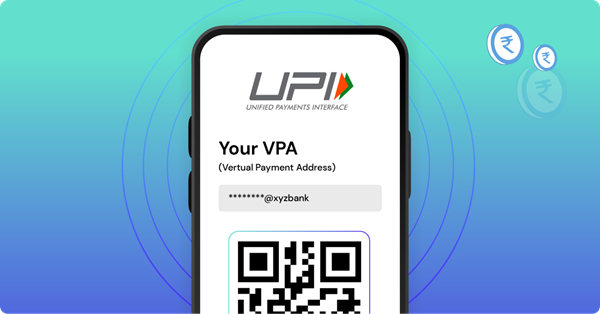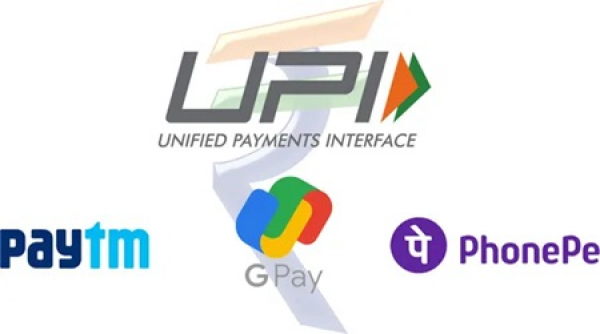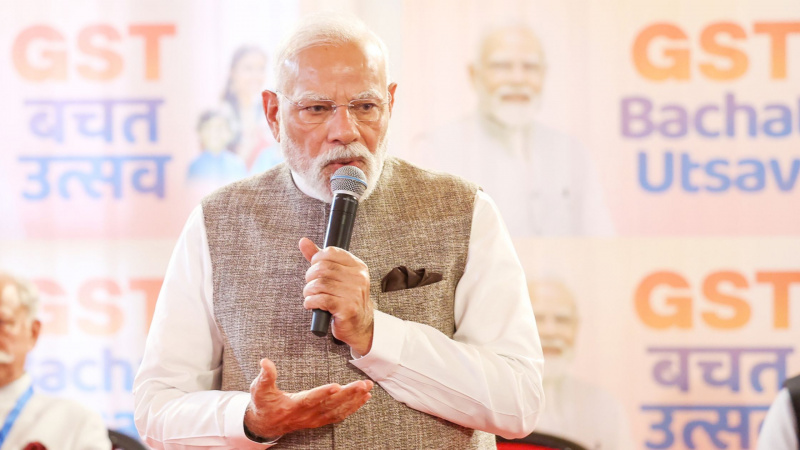Virtual Payment Address (VPA): Uses, Benefits, and How It Works
- by B2B Desk 2024-07-04 11:41:41
A Virtual Payment Address (VPA) is like a digital bank account number used for UPI money transfers. It's recognized universally by banks and financial institutions worldwide. Having a VPA offers several advantages, such as more flexible payment options, ease of use, and the ability to facilitate international payments.
In order to make UPI transactions, a virtual payment address (VPA) is required, similar to a physical bank account number. The Virtual Payment Address (VPA) may not be directly tied to your physical bank account on a certain UPI app, as it acts as a virtual identifier linked directly to your bank account information. It serves as a distinct code utilized by UPI apps to start immediate money transfers.
The VPA is essential in UPI transactions as it forms a digital identity for your bank account. It serves as the virtual payment address for transferring funds. This address is connected to different types of accounts such as savings, current, or hybrid accounts which are used for UPI transactions.
Essentially, a VPA allows you to link multiple bank accounts, card/wallet accounts, and digital payment addresses. It serves as a unique identifier for making instant payments through UPI apps or other real-time transaction methods. VPA numbers are instrumental in creating and using digital or virtual bank accounts securely and efficiently.
How VPA works?
Here’s a simplified explanation of how the Virtual Payment Address (VPA) works in UPI (Unified Payments Interface):
- Establishing a Virtual Personal Assistant: To create a VPA, begin by installing a banking app with UPI support. Within the app, choose the option to create a VPA. You can select a unique username, such as yourname@bankname. Once you verify your identity and link your bank account, your VPA is created. This allows you to securely send and receive funds.
- Linking Your Bank Account: Provide your account number and mobile number to link your bank account to the app. The information is confirmed by the app and links your selected VPA with your bank account. This guarantees a seamless connection for transactions.
- Making Transactions: To initiate a transaction, enter the recipient's VPA instead of their account details. The UPI system uses the VPA to securely identify the recipient's bank account. Specify the amount and purpose of the transaction, then confirm it using your UPI PIN for authentication.
- Completing the Transfer: Once confirmed, the funds are securely transferred between the linked bank accounts. The recipient's bank receives the transfer request, verifies it, and processes the transaction. Importantly, you don’t need to exchange bank account details, ensuring privacy and making transactions quick and convenient.
The VPA system with UPI is widely favored in India for its privacy features, ease of use, and efficient fund transfer capabilities.
How To Create A VPA
Setting up your own Virtual Payment Address (VPA) is an uncomplicated procedure. To establish your VPA, follow these instructions:
- Choose a UPI App: Start by downloading a UPI-enabled app like BHIM, Google Pay, PhonePe, or your bank's UPI app.
- Install and Open the App: Install the app on your smartphone and open it.
- Register: Register on the app by entering your phone number and verifying it with an OTP (One-Time Password).
- Link Your Bank Account: Select your bank from the list provided in the app and link your bank account.
- Verify Your Account: Verify ownership of your bank account by entering the last six digits of your debit card and its expiry date.
- Build Your Virtual Personal Assistant: Build your one-of-a-kind VPA. Usually, it will be in the form of yourname@bankname or yourname@upi.
- Personalize Your Virtual Personal Assistant: Certain applications offer the option to personalize the initial segment of your VPA by incorporating your name, phone number, or another form of identification.
- Create Your UPI PIN: Establish a UPI PIN, a 4- or 6-digit code that will be used for verifying transactions.
That's it! Your VPA is now set up and ready to use for making secure and convenient digital payments.
Benefits of VPA
Using Virtual Payment Address (VPA) for UPI payments offers several benefits:
Convenient Transactions: When using VPA for transactions, you avoid the need to enter the recipient's bank details each time. Instead, you simply enter their VPA and initiate the transaction quickly. This saves time, especially during urgent fund transfers.
Secure Processing: Transactions through VPA do not require you to share sensitive bank credentials. This eliminates the risk of financial information theft. Moreover, the incorporation of UPI PIN and biometrics provides an additional level of security, guaranteeing secure transactions.
User-Friendly Interface: You don't need advanced technical knowledge to use VPA for money transfers. UPI-enabled apps have user-friendly interfaces that make sending and receiving money as simple as sending a message. The registration process is straightforward, and the apps guide you through the steps effortlessly.
Wide Acceptance: VPA payments are widely supported by multiple banks and payment service providers across India. Almost every merchant and individual using UPI has a VPA, making transactions hassle-free without the need for different payment methods.
24x7 Accessibility: You can make transactions using VPA anytime, day or night, as long as you have an internet connection. This flexibility allows you to manage last-minute payments like bills and rent without being restricted by traditional banking hours.
Using VPA in UPI apps combines convenience, security, simplicity, and widespread acceptance, making it a preferred choice for digital payments in India.
Final Words
The Virtual Payment Address (VPA) is now a popular and secure option for digital payments in India using the Unified Payments Interface (UPI) system. Users can connect their bank accounts to a customized VPA to make secure transactions without disclosing their confidential banking information. There are many advantages to creating and using a VPA. Above all, it boosts security by getting rid of the possibility of sharing private bank account details while making transactions. This greatly decreases the risk of fraud and unauthorized entry into personal banking information.
Additionally, VPA streamlines the payment procedure by giving users a unique identification that can be easily shared for transferring money. By using apps with UPI capabilities, individuals are able to start transactions quickly by inputting the recipient's VPA, indicating the amount, and confirming the payment instantaneously. Funds are moved promptly, providing a fast and effective payment process.
FAQs
Q. Is UPI id the same as vpa?
A. Yes, VPA and UPI ID are the same. VPA is essentially a UPI ID that may be used to transfer and/or receive money through UPI.
Q. What is the virtual payment address in Gpay?
A. A Virtual Payment Address (VPA) is a unique identifier that helps UPI to track a person's account. It acts as an ID independent of your bank account number and other details. VPA can be used to make and request payments through a UPI-enabled app.
Q. What is the virtual payment address in PhonePe?
A. A UPI ID or VPA (Virtual Payment Address) is a unique ID that is used to make UPI payments in place of bank account details. A PhonePe UPI ID is a unique ID linked with your bank account which has at least 3 characters followed by a handle (@ybl / @ibl / @axl).
Q. How do I find my VPA?
A. To find your UPI ID or VPA, simply go to the profile section located on the top left corner of the main screen in the Paytm app. From there, you can easily access and share your UPI ID or VPA to initiate seamless transactions with others.
Also Read: 7 Best Digital Marketing business Ideas for Rapid Growth

POPULAR POSTS
The Agentic Revolution: Why Salesforce Is Betting Its Future on AI Agents
by Shan, 2025-11-05 10:29:23
OpenAI Offers ChatGPT Go Free in India: What’s Behind This Big AI Giveaway?
by Shan, 2025-10-28 12:19:11
Zoho Products: Complete List, Launch Years, and What Each One Does
by Shan, 2025-10-13 12:11:43
Arattai vs WhatsApp: Which Messaging App Should You Choose in 2025?
by Shan, 2025-10-10 11:55:06
Top Buy Now Pay Later (BNPL) Apps for Easy Shopping in 2025
by Shan, 2025-09-22 10:56:23
iPhone 17 Sale in India Begins: Full Price List, Launch Offers and Store Availability
by Shan, 2025-09-19 12:00:45
Apple September 2025 Event Recap: iPhone 17, iPhone Air, Apple Watch Series 11, and India Pricing Revealed
by Shan, 2025-09-10 09:55:45
RECENTLY PUBLISHED

Loan EMIs to Drop as RBI Slashes Repo Rate - Full MPC December 2025 Highlights
- by Shan, 2025-12-05 11:49:44

Pine Labs IPO 2025: Listing Date, Grey Market Premium, and Expert Outlook
- by Shan, 2025-11-05 09:57:07

Top 10 Insurance Companies in India 2026: Life, Health, and General Insurance Leaders Explained
- by Shan, 2025-10-30 10:06:42

Best Silver Investment Platforms for 2025: From CFDs to Digital Vaults Explained
- by Shan, 2025-10-23 12:22:46

Zoho Mail vs Gmail (2025): Which Email Platform Is Best for Businesses, Startups, and Students?
- by Shan, 2025-10-09 12:17:26

PM Modi Launches GST Bachat Utsav: Lower Taxes, More Savings for Every Indian Household
- by Shan, 2025-09-24 12:20:59




 Subscribe now
Subscribe now 